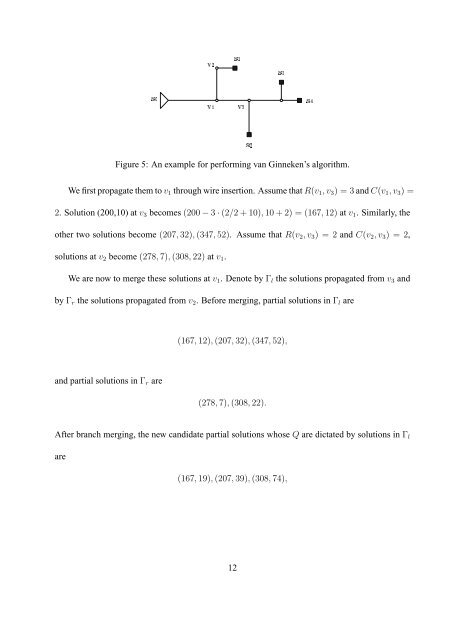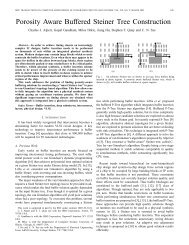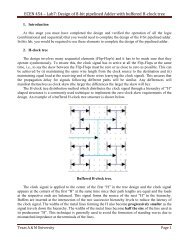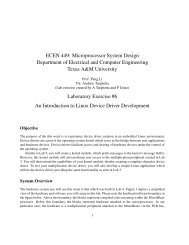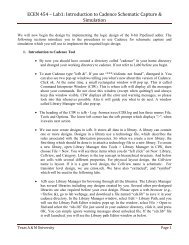Buffer Insertion Basics - Computer Engineering & Systems Group ...
Buffer Insertion Basics - Computer Engineering & Systems Group ...
Buffer Insertion Basics - Computer Engineering & Systems Group ...
Create successful ePaper yourself
Turn your PDF publications into a flip-book with our unique Google optimized e-Paper software.
Figure 5: An example for performing van Ginneken’s algorithm.<br />
<br />
We first propagate them to v 1 through wire insertion. Assume that R(v 1 ,v 3 ) = 3 and C(v 1 ,v 3 ) =<br />
<br />
2. Solution (200,10) at v 3 becomes (200 − 3 · (2/2 + 10), 10 + 2) = (167, 12) at v 1 . Similarly, the<br />
other two solutions become (207, 32), (347, 52). Assume that R(v 2 ,v 3 ) = 2 and C(v 2 ,v 3 ) = 2,<br />
solutions at v 2 become (278, 7), (308, 22) at v 1 .<br />
We are now to merge these solutions at v 1 . Denote by Γ l the solutions propagated from v 3 and<br />
by Γ r the solutions propagated from v 2 . Before merging, partial solutions in Γ l are<br />
(167, 12), (207, 32), (347, 52),<br />
and partial solutions in Γ r are<br />
(278, 7), (308, 22).<br />
After branch merging, the new candidate partial solutions whose Q are dictated by solutions in Γ l<br />
are<br />
(167, 19), (207, 39), (308, 74),<br />
12


